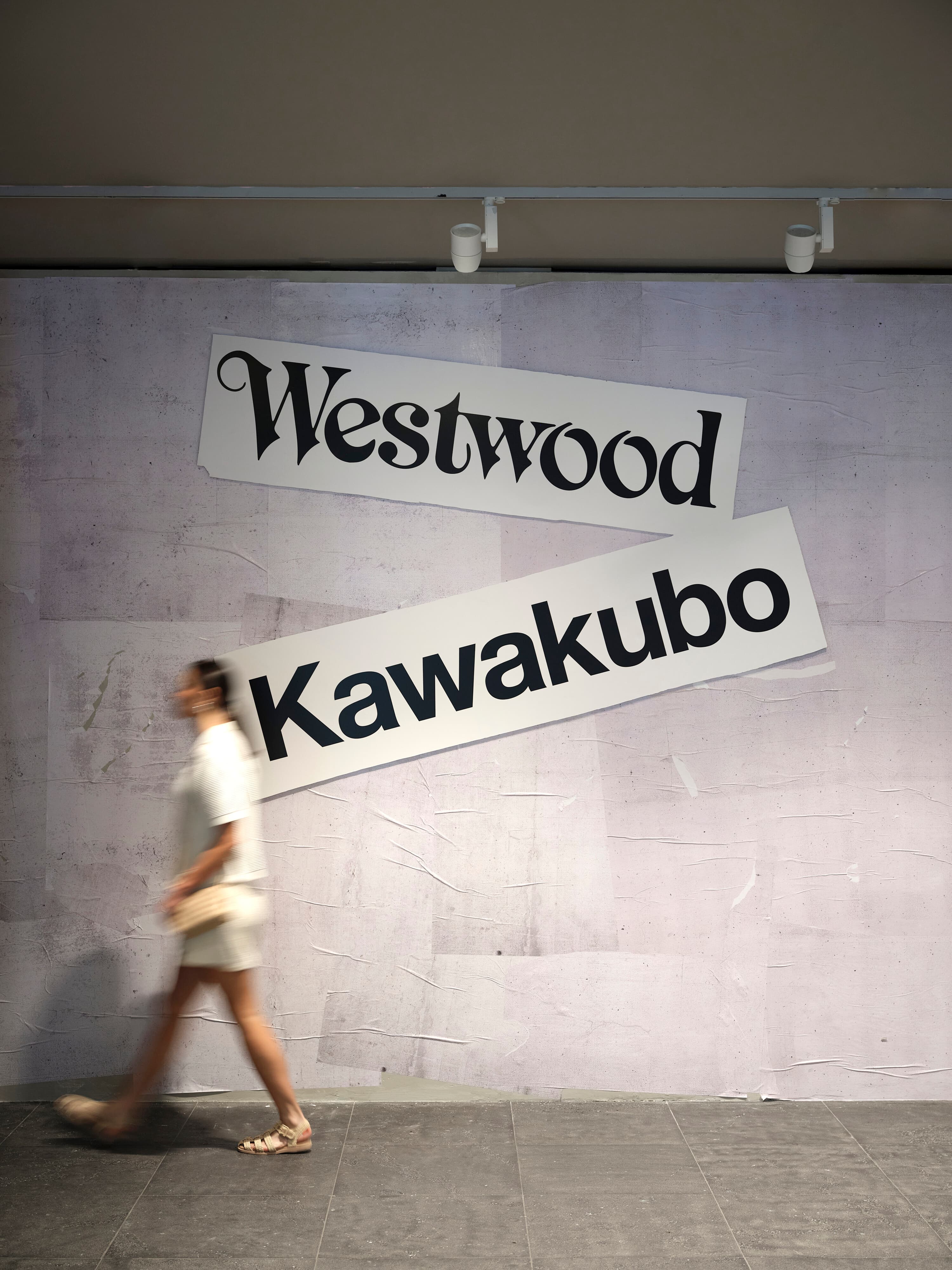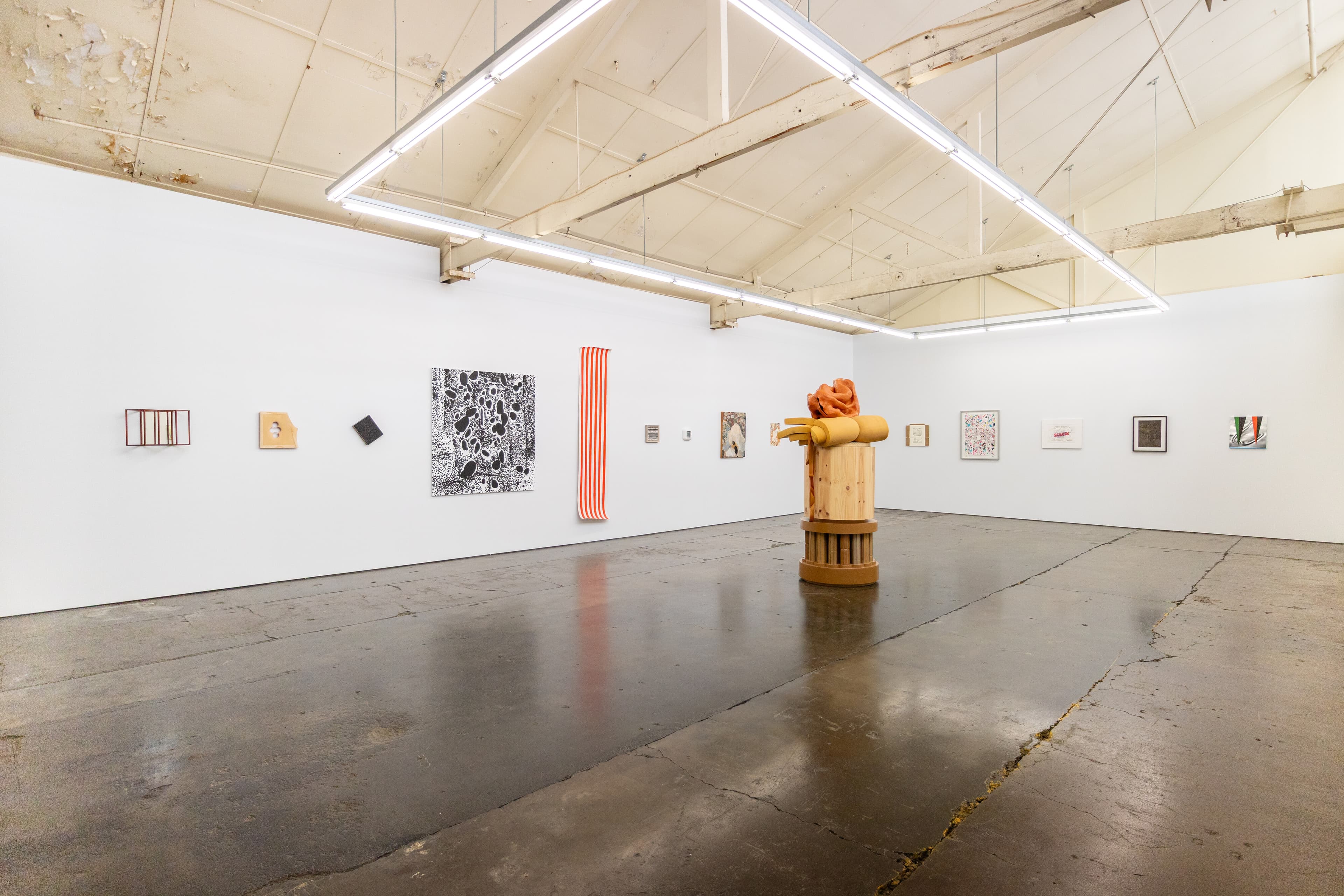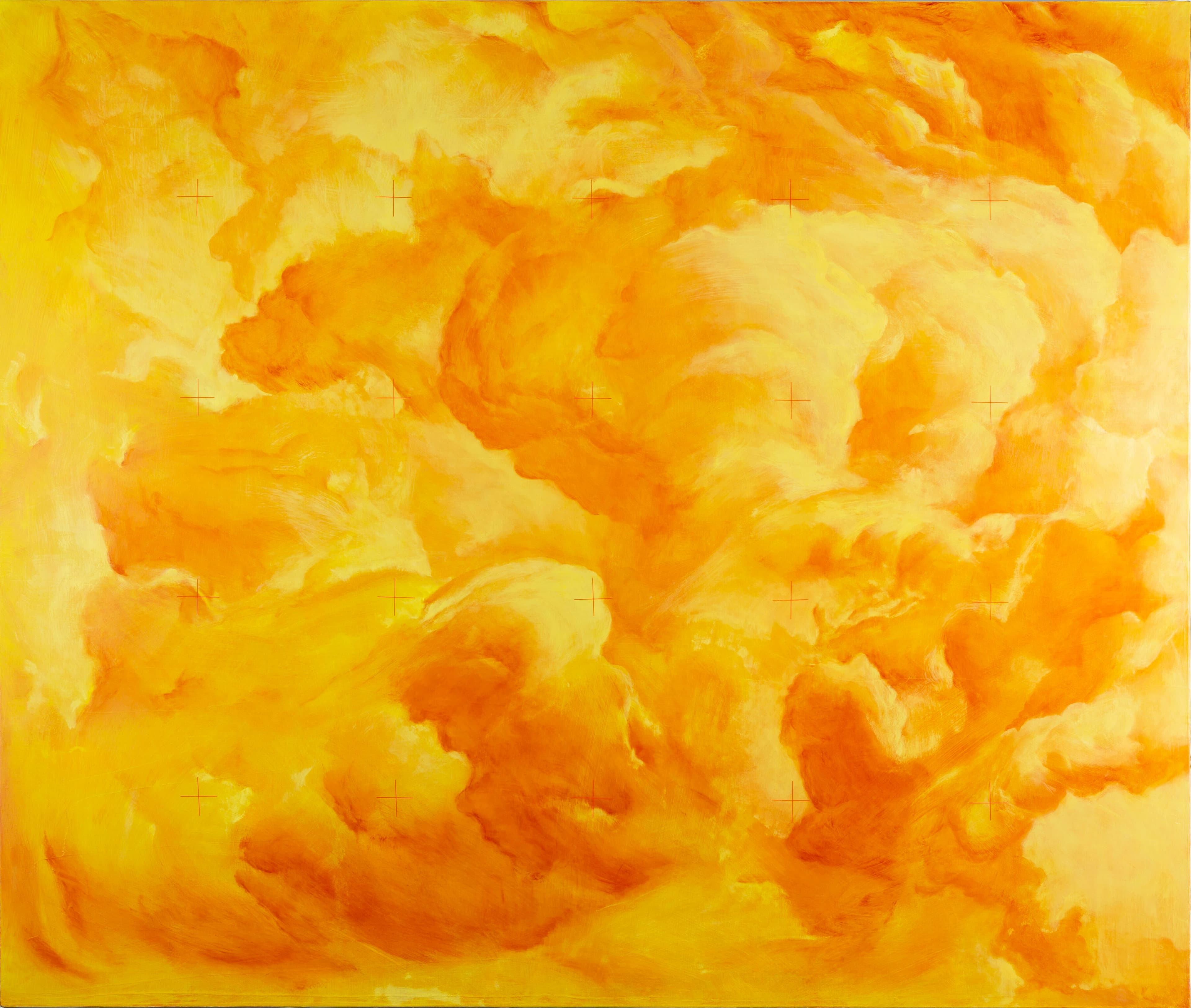Robert Ashton, Carol Davies, Peter Crowe, Carol Jerrems, Richard Muggleton, 1970, silver gelatin print, 20 x 25 cm. Courtesy of the artist.
The Basement: Photography from Prahran College (1968–1981)
Chelsea Hopper
Originally pitched by Prahran College alumni, The basement is an exhibition of almost exclusively student work by fifty-eight participants, who each, in some capacity, attended Prahran College during a thirteen-year period from 1968 to 1981. In May 1968, Prahran Technical School initiated the first photography program in an Australian art school, which was located in the basement of the then-new art and design building on the corner of High Street and Thomas Street in the southside Melbourne suburb of Prahran. It is now well-known that the program gave rise to an important generation of artists, many of whom have since developed internationally significant reputations, including Bill Henson, Carol Jerrems, Rod McNicol, and Polly Borland. If this basement shaped a generation of Australian photography, what blind spots, exclusions, and myths did it also produce? The basement doesn’t attempt to neatly resolve these questions; instead, it embraces the sprawl, ambition, and unevenness of the era—and the experience of being an art school student—through its dense hang.
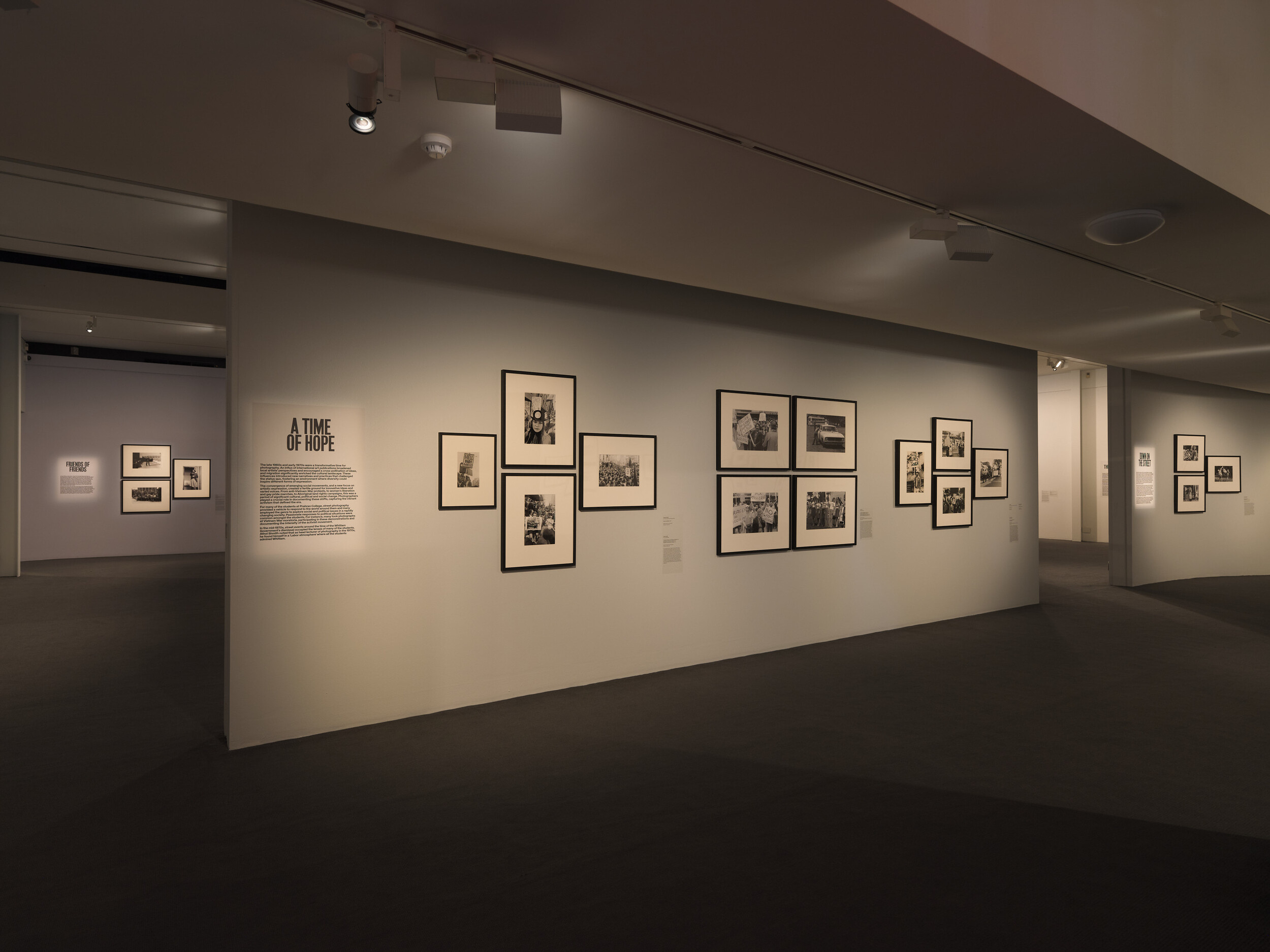
Installation view of The basement: photography from Prahran College (1968–1981), 2025. Courtesy of Museum of Australian Photography.
The exhibition is packed; not one wall—even the one by the toilets—is left alone. Across four dedicated sections, 286 framed prints—along with three videos and five vitrines filled with archival material and ephemera—line each wall in small clusters. The sprawl and vastness of the exhibition’s hang is broken up into seven groupings, loosely themed, based on style, historical context or relationships (“Friends of Friends” and “Down on the Street,” for example). These curatorial decisions offer us a much more equalised or horizontal approach to the history of Prahran College during this period, as the exhibition curators Angela Connor and Stella Loftus-Hills resist the trappings of a linear or chronological presentation, or an even more meaningless salon-style hang. This means that those canonical alumni figures like Bill Henson aren’t siloed to dedicated walls, but instead sit alongside works by lesser-known students like Lyn Cheong. Even Carol Jerrems’ Vale Street (1975)—arguably one of the most iconic Australian photographs of the twentieth century—doesn’t sit alone but is neighboured by Jerrems’ Juliet holding ‘Vale Street’ at Murray Road (1976), and a mock-up exhibition idea visually mapped out with contact prints by her that never came to fruition. The hang situates Jerrems in a more relational, networked framing—these prints sit directly next to works by Prahran teachers Athol Shmith and Paul Cox.
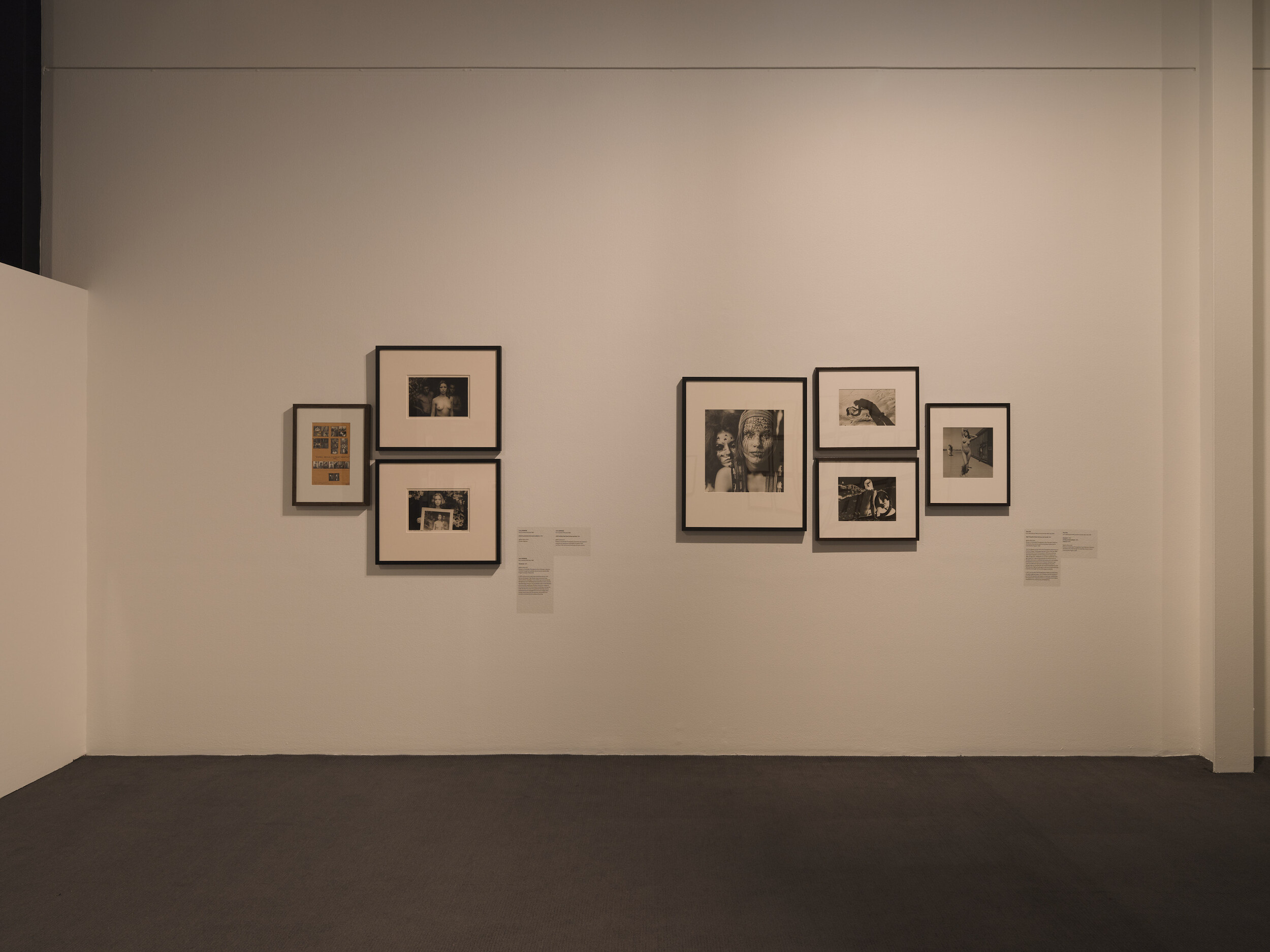
Installation view of The basement: photography from Prahran College (1968–1981), 2025. Courtesy of Museum of Australian Photography.
This curatorial even-handedness also de-emphasises a typical trope: the tendency to contextualise the history of photography during the late 1960s and 70s by solely focusing on politically progressive practices documenting protest movements and counter-culture. The hang avoids or complicates this trope by incorporating a broad range of work that resulted from often banal or instrumental student projects. We are compelled to look beyond what we know, or what we expect. Included here are black-and-white photographs by Graham Howe, Peter Kelly, Andrew Chapman, and Richard Muggleton, which document crowds of protestors from the Vietnam Moratorium—the largest public demonstrations in Australia’s history at the time—to Liberal party rallies (“Count another Liberal”) and pro-Whitlam protestors (“GOD LOVES GOUGH”). These works hang alongside the rest of the room full of candid street photographs taken by students throughout the 1970s. There are some charming moments—a highlight is Geoff Strong’s Bald man enjoying the sun, St Kilda (1975)—and yes, it’s exactly what it sounds like. Elsewhere we find tenderness in Johann Krix’s 1971 photograph of a cosy elderly couple having tea on a makeshift tabletop on a park bench in South Yarra. The simultaneity of the hang displaces a singular view of this era, where students are not only on the street capturing social upheaval, but also find subjects in isolation, the everyday, and ennui.
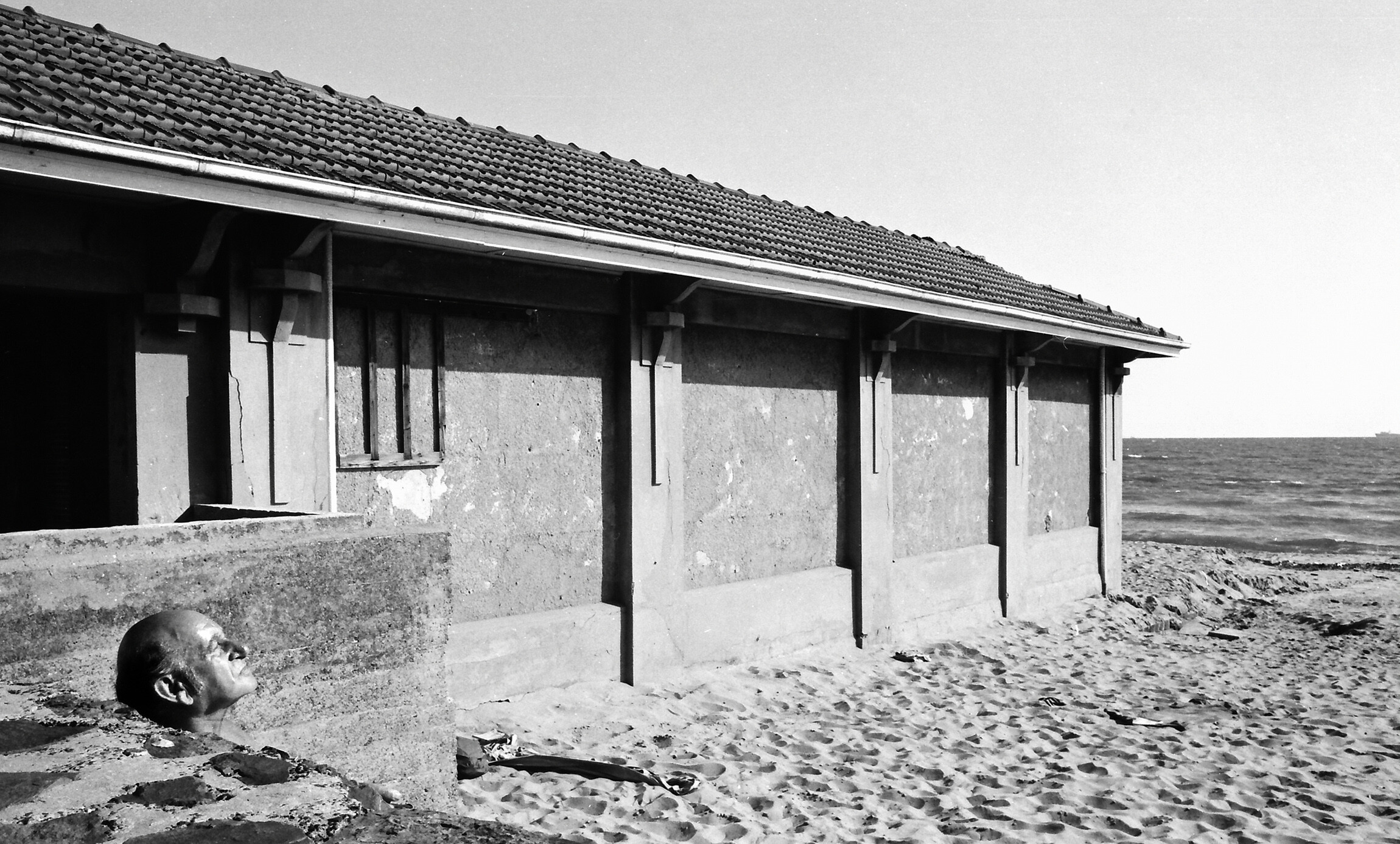
Geoff Strong, Bald man enjoying the sun, St Kilda, 1975, silver gelatin print. Courtesy of the artist.
Part of the ambition of The basement is its archival and historical excavation, evident not just in the expanse of material, but in the way that the exhibition highlights the materiality of the work and the archive itself. In a vitrine, you can find a portrait by Con Aslanis of a young John Nixon, who taught at Prahran—a silver gelatin print on fibre-based paper, with a bit of a curl. Contact sheets show a line of legs photographed over and over again made for the cover of the student publication Thigh, alongside various issues of the magazine from the late 60s—some slightly water-damaged and worn. A student assignment by Viki Petherbridge is re-housed and framed showing the remnants of rusty pin holes, a result of them being pressed into the corners of every print. More information is given to us, and there is less preciousness. Notably, the selection of Jerrems’ photographs reveals how she signed, titled, and numbered her editions—that is, her use of pencil and pen to mark up her prints—details that were overmounted in her most recent survey at the National Portrait Gallery in Canberra. The teaching program at the time encouraged students to think about ways of inserting their work within existing or emerging museological and art market conventions (editioning prints, for example). Jerrems was particularly attuned to this: she designed and made her own stamp “carol jerrems photographic artist” while she was a student at Prahran.
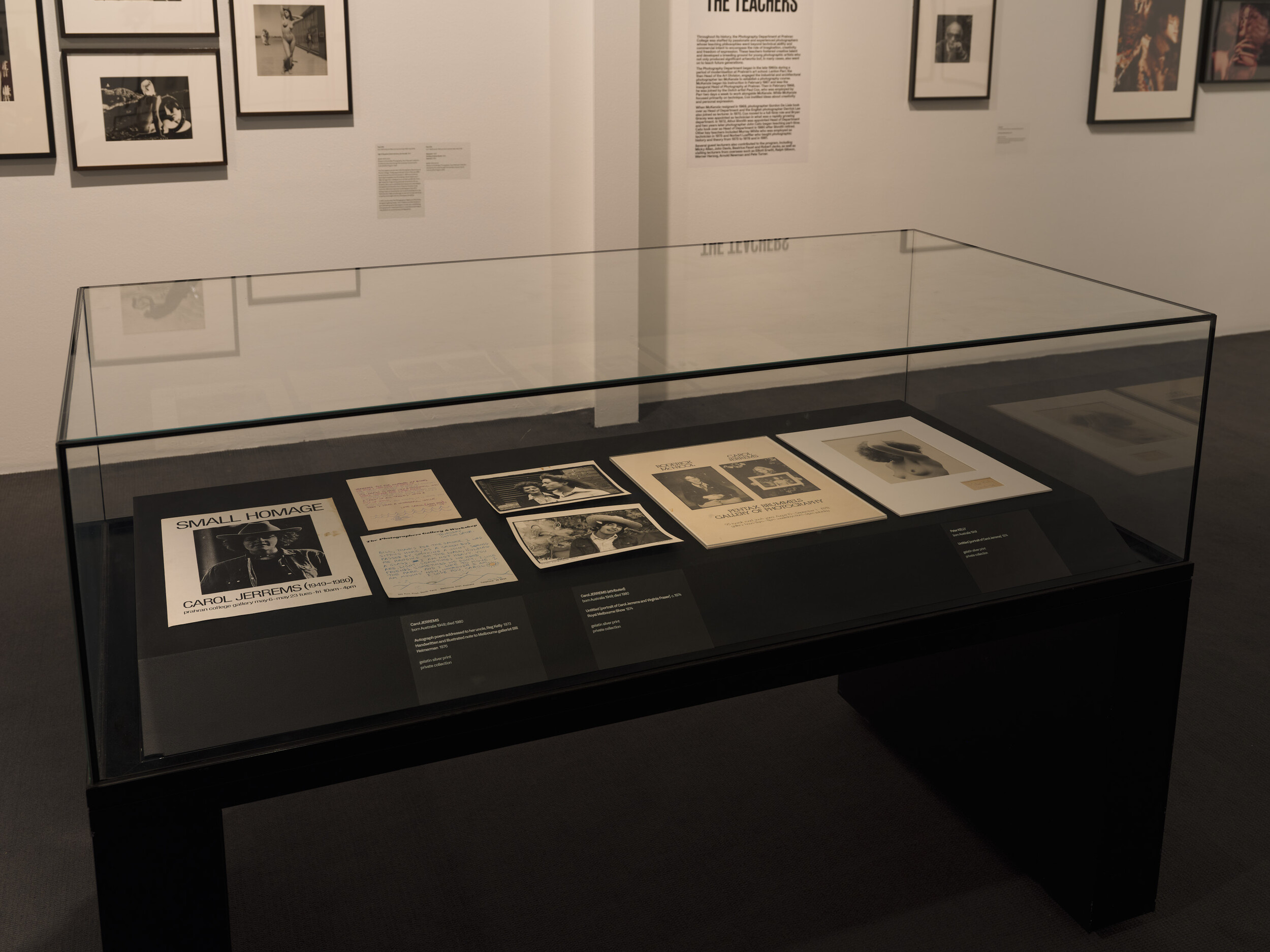
Installation view of The basement: photography from Prahran College (1968–1981), 2025. Courtesy of Museum of Australian Photography.
The number of vintage prints included in the exhibition is impressive. It is clear the curators went to great lengths to source original material and avoid the now-relatively common practice of producing modern prints for display. This means that the exhibition foregrounds an important aspect of the visual sensibility and materiality of photographic practice at this time. Four of Stella Sallman’s portraits of glam punks feel miraculous up close, and Rod McNicol’s portraits look like they could have been printed yesterday. Their quality and age become especially apparent by the end of the exhibition, where there is a sudden smattering of pigment inkjet prints documenting student crit sessions, modern prints which flatten the experience of the work. The indifferent surface of the inkjet prints clashes with the tactile richness of the vintage silver gelatin prints—their fibre-based paper, emulsion, and patina marking them as artefacts of another, more materially sensitive era. It is a reminder that how we encounter a photograph today is shaped as much by its physicality as by its image.
It is curious to see student assignments completely omit any form of occupational health and safety or enforced institutional ethics codes of conduct that are so embedded in university protocols today. This absence points to the near-total absorption of art schools into universities, a shift that has largely erased the pedagogical autonomy and unruly experimentation once central to stand-alone art schools. An example of a 1978 student group’s “free assignment” produced images of themselves dressed up as revolutionaries, wearing berets and holding real guns. They are easy to miss in a vitrine filled with a number of technical exercises and photographic experiments related to both form and content, from a student’s take on a record cover, to a beer ad, to stylistic attempts at approaching portraiture through fashion. Some of the projects are polished; others are tentative, even clumsy. But the point is that students were producing work rapidly, testing ideas, and learning specific technical skills through practice. The exhibition foregrounds this messy, uneven process of collective experimentation. Here, a culture of experimentation also blurred the boundaries between students and teachers, fostering a different kind of proximity.
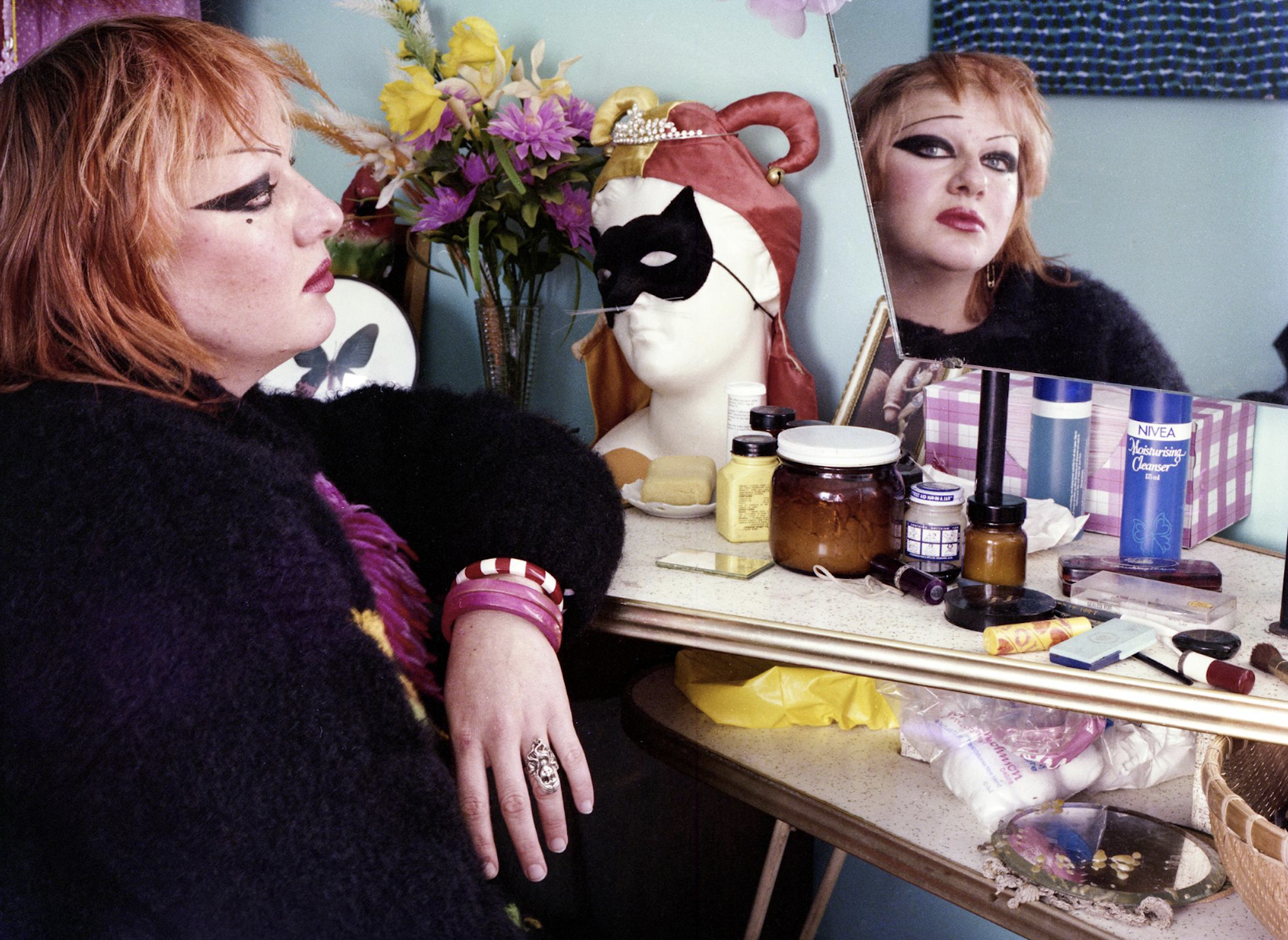
Stella Sallman, Sue at the mirror, 1977, chromogenic print, 15.5 x 21.0 cm. Courtesy of Museum of Australian Photography (MAPh). Museum of Australian Photography, City of Monash Collection, acquired 2025.
One of the outcomes of the program was the social networks it engendered—the teachers became very close with students, just as the generation of students forged together a significant shift in photographic culture in Melbourne, albeit one that tended to be firmly located in the documentary form. The student-teacher relationships formed were so close that, in some cases, students became models. In The Teachers section, we see a mix of portraits—one of Athol Shmith, the charismatic head of the photography department (1972–1979)—alongside photographs taken by the teachers themselves. In one striking example, a photograph by teacher Paul Cox shows a nude student modelling, arms raised in a contrapposto pose on the rooftop of Prahran College, while Shmith is seen in the background mid-tango.
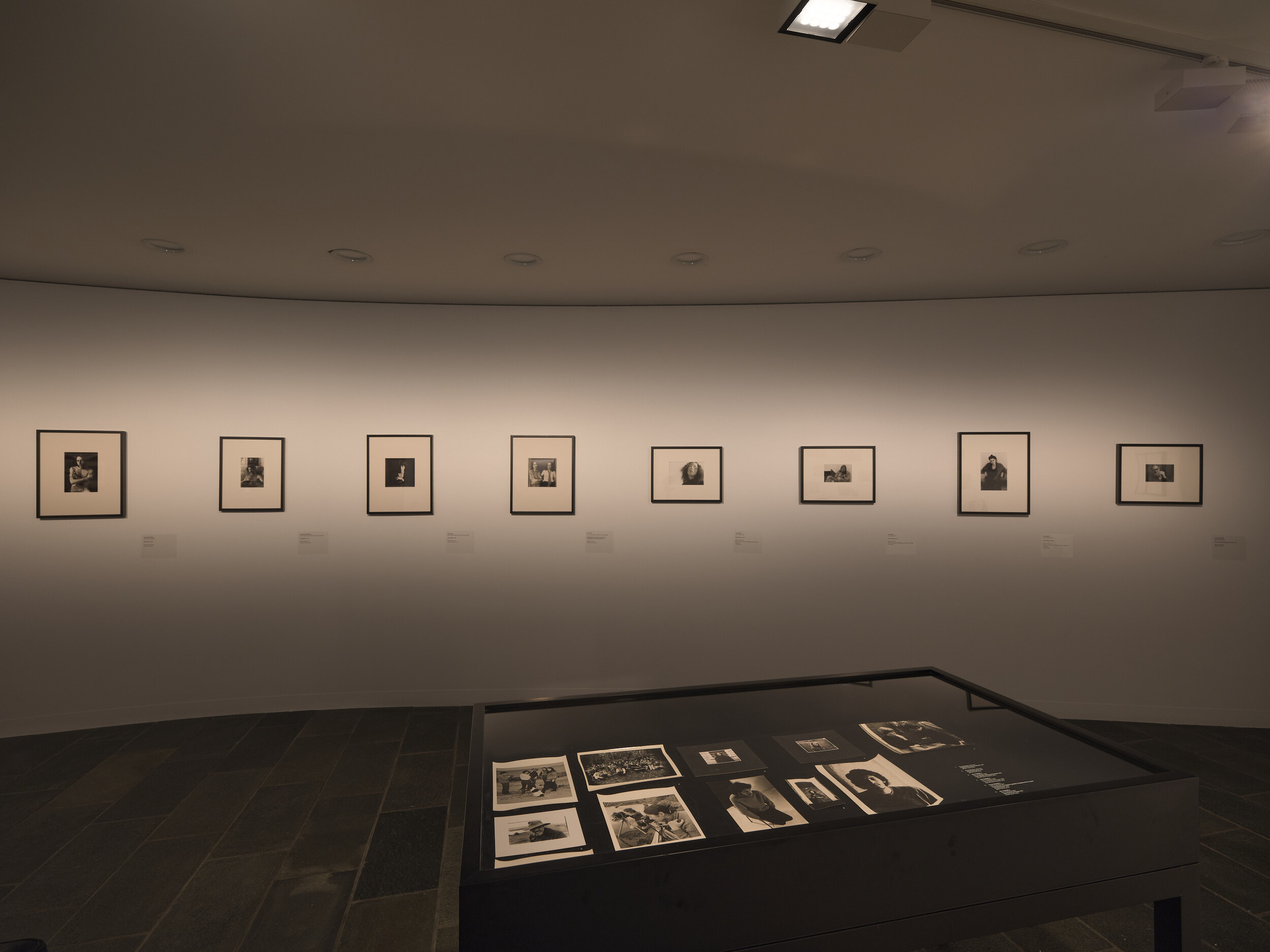
Installation view of The basement: photography from Prahran College (1968–1981), 2025. Courtesy of Museum of Australian Photography.
Yet the equalising logic and even-handed treatment of photographic works in the exhibition destabilises established hierarchies of historical significance for this period. How does one deal with simultaneity at a time when photography in Australia was going through such a monumental shift? The discipline was not only being accepted as a legitimate artform—now taught in art schools—but it was also a time when photography departments were being formed in major art institutions and multiple photography galleries were established to support a new generation of photographers. With its focus on one small department, this exhibition can’t tell that whole story, but it gestures at it.
Only a few key moments hint at the significance: Carol Jerrems’ student assignment, Alphabet folio (1968)—a project that she ended up giving to her own students when later teaching photography at Heidelberg Technical School—was purchased in 1971 by the National Gallery of Victoria, a year after she graduated. You can also see a vintage poster of her 1978 exhibition with Rod McNicol at Brummels Gallery, a gallery where several Prahran students exhibited, and Jerrems showed three times. Brummels was set up by Rennie Ellis and was largely run by Robert Ashton, who also went to Prahran and lived in share houses with Jerrems, so Prahran’s cohort was supported by this emerging private gallery system, facilitated by the close proximity of the community. Henson’s 1974 photographs of dancers taken in an old school hall in Malvern capture something of the theatrical drama he would bring to photography in Australia. As the catalogue for The basement reminds us, it was thanks to his teacher Athol Shmith—who showed the works to Les Gray and curator Jennie Boddington at the NGV—that Henson was offered his first exhibition in 1975, remarkably, at the age of 19.
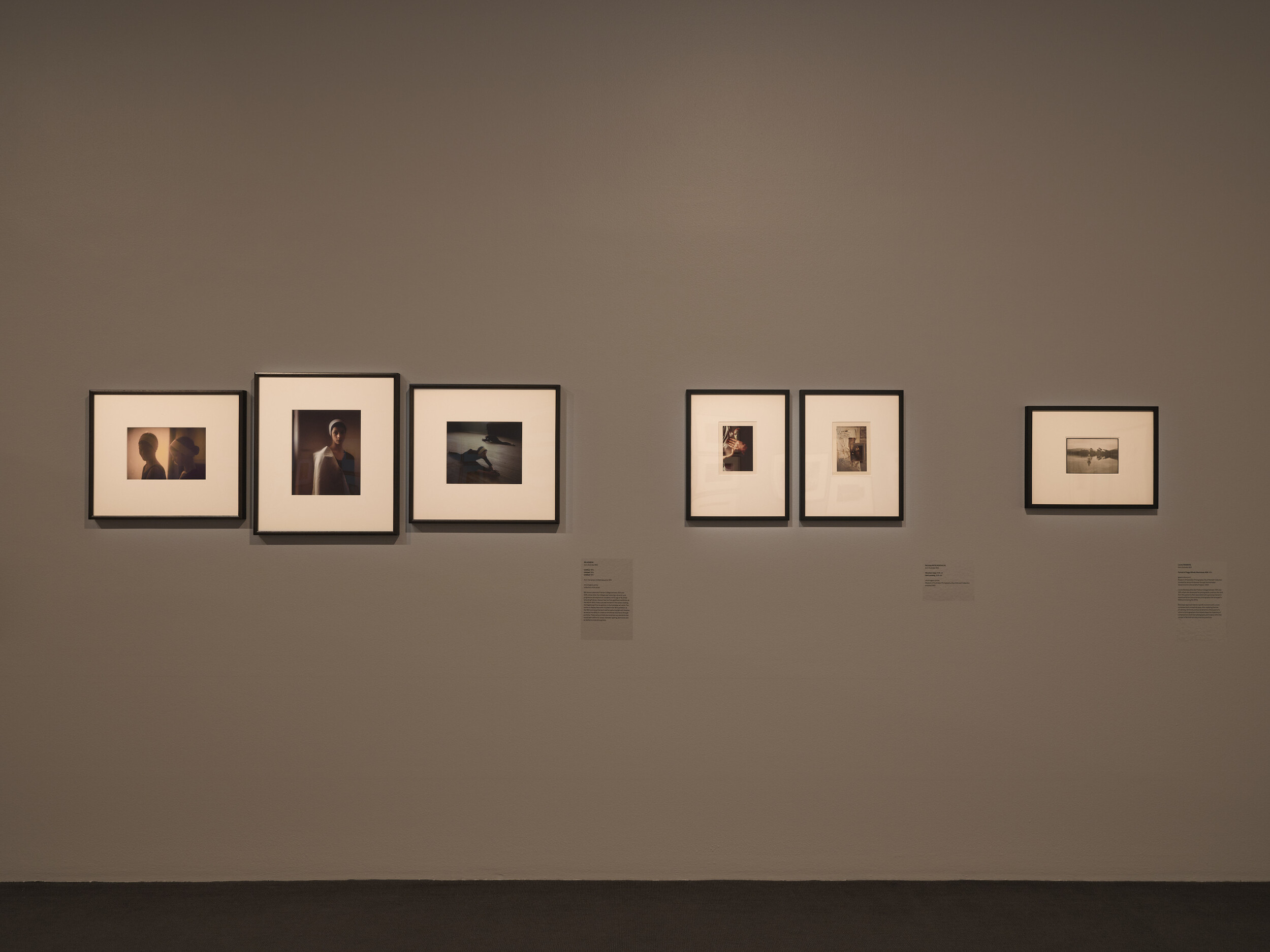
Installation view of The basement: photography from Prahran College (1968–1981), 2025. Courtesy of Museum of Australian Photography.
However, these peaks of local photographic history are buried under the exhaustive amount of material included in the show. It is difficult to pay attention to everything equally, and inevitably certain aspects get cut off or only rediscovered in further reading. It would be unfair not to acknowledge the exhibition’s extensive catalogue, which does most of the heavy lifting in historicising this key period—providing personal accounts from students, an entertaining conversation between Bill Henson and Susan van Wyk, numerous essays by photography curators and historians, over 250 illustrations, and contextualising the photography department and its move toward more progressive approaches to teaching. It is here, at the back of the catalogue, that I learn how slim the number of official graduates was during these thirteen years (dropping out was not uncommon at this time, and some students returned later on, thanks to Whitlam’s free education reforms). I recall seeing the graduating class of 1970—just four people—in Robert Ashton’s photograph near the end of the exhibition, showing Carol Davies, Peter Crowe, Carol Jerrems, and Richard Muggleton sheepishly lined up in front of a brick wall. In a show so dense with ambition and energy, such modest beginnings feel easy to overlook—all the more important to remember.
Chelsea Hopper is a writer and curator based in Naarm/Melbourne.
